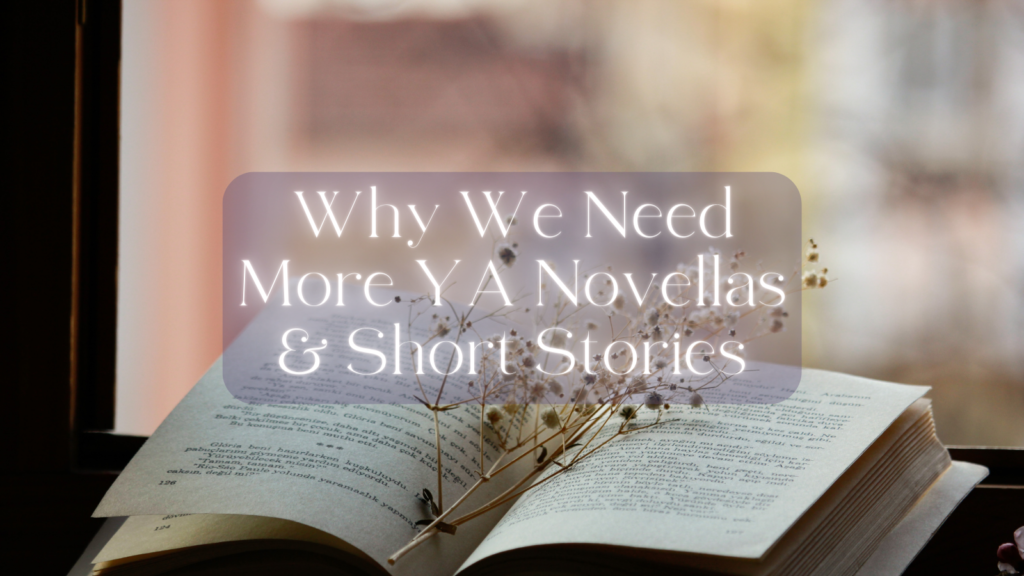
The YA genre is in desperate need of novellas.
I recently re-read The Metamorphosis and it reminded me why novellas are great: they’re easy to read. With a novella you get the best of both worlds in terms of economy; you get an author firing on all cylinders and you get a bite-sized nugget of pure, unadulterated story. Unfortunately, the YA genre is severely lacking in the novella department, and here’s why that should change.
Because novellas are short, they are more accessible to readers who may not have the time or inclination to commit to a longer book. The Picture of Dorian Gray, The Pearl, Animal Farm, The Fall and Coraline were especially valuable to me as a young, impatient reader. I felt accomplished reading a book in only a few hours and completely understanding its structure. Don’t get me wrong, novels are a great way to help young audiences transition to longer and more complex storytelling, but the market is so saturated that those readers end up consuming unhealthy amounts of fluff. The novella offers an accessible alternative for young readers to engage with literature regularly.
Who is YA for? According to Foyinsi Adegbonmire, editor of Feiwel and Friends, “It should always remain at the forefront of adult readers’ and even publishers’ minds, that ‘we’re guests in this space,’” and, yet, the readership shows that adults are not guests, but the slight majority. On top of that, according to a 2017 survey a little more than 70% of YA novels are longer than 60,000 words, or ≈ 240 pages. Authors are writing longer books with more crossover appeal and end up neglecting their intended audience. But kids are harsh critics–they know when something isn’t for them. Sometimes it feels like authors try to stretch their ideas too thin to meet the standard novel length instead of condensing it to a length young readers find engaging. I think YA publishers have adopted Blaise Pascal’s attitude that “I have made this longer than usual because I have not had the time to make it shorter.” By taking a risk on the novella, authors and publishers might more effectively reach their intended audience.
Despite their short length, YA novellas can still explore complex themes and issues relevant to young adults. Charlotte Perkins Gillman’s 1892 novella The Yellow Wallpaper is perhaps the best example of this, critiquing the structures that silenced women in the Victorian era through a series of short journal entries from an intentionally nameless author. In only 22 pages, Perkins created a one of a kind piece of literature and even influenced some doctors of her time to change their approach to treating female patients. A modern YA example that addresses similar themes is This Winter, a novella by Alice Oseman. It is an offshoot of Oseman’s Solitaire series following a teen’s first Christmas home after his stay at a psychiatric ward. With the help of his sister, he must navigate his family’s prying eyes and questions. Oseman’s sensitivity and direct style works well with the format and the reader hangs onto every word. The brevity of the novella requires authors to distill these themes into their purest form, resulting in powerful, resonant narratives.
I think the most pressing need for YA novellas is to provide a platform for diverse voices and perspectives that might not get the same level of exposure in longer, more traditional formats. Much like the short film for directors, the novella showcases an author at their most nimble, giving emerging authors and authors from underrepresented backgrounds a chance to share their work with a wide audience without having to write a 300-page novel. In this way, the novella is not only a twilight zone between poem and novel, but also between homogeneity and diversity.
Works Cited
Aerogramme Writers’ Studio. “35 Beautiful and Insightful Quotes about Short Stories.” Aerogramme Writers’ Studio, 16 May 2019, www.aerogrammestudio.com/2014/06/25/35-beautiful-and-insightful-quotes-about-short-stories/.
David W. Berner, The Writer Shed. “In Praise of the Novella.” Medium, The Writer Shed, 13 Jan. 2021, medium.com/the-writer-shed/in-praise-of-the-novella-a49d0d60382a.
Prize, The Story. “Allan Gurganus: A Few Words for the Novella.” Allan Gurganus: A Few Words for the Novella, thestoryprize.blogspot.com/2014/01/allan-gurganus-few-words-for-novella.html. Accessed 17 Apr. 2024.
“Writing for Young Adults – a Look at the Numbers.” Hannah Holt, Hannah Holt, 4 Feb. 2021, hannahholt.com/blog/2017/10/19/writing-for-young-adults-a-look-at-the-numbers.
Kasey Taylor, Pine Reads Review Writer